- Home
- Julian Barnes
Letters From London Page 19
Letters From London Read online
Page 19
However, the taxpayer was not very impressed by what was being done in his or her name. It’s true that £60 million, spread over a number of years, is nothing in terms of the national budget—about the equivalent of a couple of bottles of dirty claret from a Paddington “off-license.” But the taxpayer has had many years now of being told by a Conservative government that public services must slim down, be efficient, give value for money—political cant constantly wheeled out to justify closing down hospitals, schools, libraries, and so on. Why should this principle and these phrases not apply equally to the public services provided by the Royal Family?
Of course, it’s often difficult to assess what “the public” thinks. In royal matters, “public attitudes” seem to be assembled from ad hoc opinion polls plus the shifting editorial viewpoints of normally monarchist newspapers. In a February 1991 poll, nearly eight out of ten people interviewed thought the Queen should pay tax; more recently, The Sun found that 59,553 of its readers believed that the Queen should fund the repairs to Windsor Castle, while only 3,843 believed that the state should do so. No one, it must be emphasized, took to the streets on this matter; no pikes were waved with blades greased for inserting in severed Windsor heads. But the monarchy’s advisers can tell what is just a straw in the wind and what looks more like a whole damn haystack. So it was not exactly a coincidence that two days after the Queen’s unprecedented appeal for sympathy the Prime Minister announced that she and the Prince of Wales had agreed to pay tax on their private incomes, and that five lesser Royals—Princess Anne, Princes Andrew and Edward, Princess Margaret, and Princess Alice—would in future be paid out of the Queen’s pocket, thus sparing the Civil List £900,000 per annum. Mr. Major indicated that the Queen herself had initiated discussions on this matter back in the summer, long before the smoke rose at Windsor. The Sun congratulated its readers with the voluptuously smug headline YOU SPOKE—SHE LISTENED and acclaimed the victory of “People Power.”
It was a tiny triumph, a successful protest squeak after decades of barnacled deference. A nation that three and a half centuries ago didn’t shrink from executing Charles I has for too long winced at the idea of examining the sovereign’s check stubs: the Queen’s untaxability has been seen as somehow part of her separateness, her magnificence, her magic. Royal cash is best discussed both in hugger-mugger and on bended knee. The last time the Windsor stipend was renegotiated—in 1990, when Mrs. Thatcher was Prime Minister and Mr. Major her Chancellor of the Exchequer—a ten-year index-linked, inflation-proof deal was signed, with a special promise from the government that no new accounts of how the Queen spent her money would be published before the year 2000.
Most people waking up to the Queen’s nod of fiscal submission probably believed that exposing Elizabeth to the lads from the Inland Revenue was a major constitutional breakthrough. But when income tax was first introduced on a permanent basis in 1842, the then Prime Minister, Sir Robert Peel, persuaded Queen Victoria to pay this new levy on all her income, from whatever source. She did so until her death in 1901, since when the principal narrative line has been of the monarchy trying with increasing success to be let off as much tax as possible. Edward VII made the first move on his accession, but was fobbed off by a government fighting a money-intensive Boer War at the time. However, George V managed to get the Civil List exempted from tax, and George VI, in a series of agreements concealed from Parliamentary scrutiny, had his private income declared untouchable as well. This has been the position for the past fifty-six years.
Income tax was trifling throughout the nineteenth century, so Queen Victoria could well afford to pay it. Serious increases began only in 1906, when Lloyd George introduced his first budget and sought money to lay the foundations of the welfare state. What has happened since then is that the tax burden has been greatly increased—rising to 97.5 percent between 1941 and 1953, and reaching 98.0 percent between 1975 and 1979—while the Royal Family has progressively argued itself out of contributing to the state over which it has presided. Part of the current sovereign’s private wealth arises directly from this exemption. If £1 were invested in averagely producing shares in 1936 (the last year the monarch paid tax), an investor who had paid tax at the top rate down the years would today find his or her stake worth £42, whereas a nontaxpaying king or queen would find the same portfolio worth £418. To put it another way: the lowest estimate of the Queen’s private wealth is £50 million, a sum that could have been generated had her father, George VI, invested a mere £119,000 in a spread of British shares back in 1936.
Queen to Pay Tax! Triumph of People Power! Yes, up to a point. But how much she will pay, and on what, is an altogether different matter, not to be decided by newspaper phone-ins. Discussions will now proceed in extreme secrecy as to what exactly belongs to the Queen (Balmoral, Sandringham, her racing stables) and what belongs to the state and is merely used by the Queen (Buckingham Palace, Windsor Castle, the royal yacht). Then there is a third category of items, like the Crown Jewels, the Royal Art Collection, and even the Royal Stamp Collection, which are generally deemed inalienable, vested in the sovereign rather than the individual, and therefore not taxable. And after the division of the spoils has been made, there will presumably be meaty arguments about the Queen’s professional allowances. What will the Revenue permit her? How many frocks and shoes are deemed essential for the job? She will, of course, be able to claim a personal exemption of £3,445, and if she can successfully argue that her husband does not work, she will benefit from an additional allowance of £1,720.
Estimates of the Queen’s wealth vary according to how you do the sums. At one end, £50 million; at the other, £6.5 billion—a figure dismissed rather pertly by young Prince Edward as “absolute crap.” That in some sense his mother lives frugally (worn stair carpet, or whatever) is not in dispute; nor is the fact that she is one of the richest women in the land. She has of late, it seems, had to dig into her reserves of capital to provide for her errant brood; and her other bloodstock business—that involving horseflesh—is said to lose £500,000 a year at the moment. So early estimates suggest that the Exchequer may be enriched by no more than about £2 million a year from Mrs. E of Windsor. The agreement to pay tax will hardly rescue the next budget of Mr. Lamont (or his successor). Nor, on the other hand, will this small symbolic step turn the Windsors from a stuffy, horse-drawn, quasi-imperial, knee-breeched organization into a modern, open, accountable, bicycling monarchy all set to greet the twenty-first century.
Her Majesty is currently being investigated by an elite squad of tax inspectors based in the northern suburbs of Cardiff. Norman Lamont is currently being investigated by Sir John Bourn, the Comptroller and Auditor General, who knew nothing of the concealed £4,700 payment and is deciding whether or not it can be justified under Cabinet Office rules. Mr. Lamont in his continuing difficulties has once more engaged Peter Carter-Ruck & Partners to act for him, and the firm is demanding apologies—plus, no doubt, impressive lawyers’ fees—from half a dozen newspapers. This time, we are assured, Mr. Carter-Ruck’s bill is to be met from Mr. Lamont’s own pocket. And presumably he won’t try using his credit card.
December 1992
Norman Lamont survived as Chancellor until May 1993, when he was reshuffled (or sacked) by John Major.
9
Britannia’s New Bra Size
Pious moralists and historical depressives like to comfort themselves with the notion that Britain is downwardly mobile. This is abundantly true in the geopolitical sense: Dean Acheson’s 1962 remark that “Great Britain has lost an empire and not yet found a role” continues to sting, because it continues to be accurate. But snufflers after signs and symbols often prefer the small instance to the large denunciation. So what better news than that Britannia herself, the very image of the nation, had become déclassé? Last month, a new ten-pound postage stamp was put on sale, and its design featured a new Britannia. In France, a replacement for the seriously sexy national figure head of Marianne mi
ght have led to an open competition, a national canvas, a TV phone-in; the Minister of Culture, if not the President himself, would have felt a duty to interfere before the announcement of a successor to Brigitte Bardot, Catherine Deneuve, and Inés de la Fressange. In this country, too, the corporeal model for Britannia has had her moments of social glitter. When she was reintroduced onto the coinage of modern times in 1672, King Charles II used the occasion to promote his mistress Frances Stuart, Duchess of Richmond and Lennox, as the national icon. Samuel Pepys had seen her image on a commemorative medal a few years earlier and written in his diary for February 25, 1667, “At my goldsmith’s did observe the King’s new medal, where in little there is Mistress Stuart’s face as well done as ever I saw anything in my whole life, I think: and a pretty thing it is that he should choose her face to represent Britannia by.” In looking for a successor to the Duchess of Richmond, the “pretty thing” might have been to choose Prince Charles’s longstanding friend Mrs. Camilla Parker-Bowles. But nowadays the royal writ does not run so far; we live in times that are more squeamish, or hypocritical, or democratic. And so in 1993 the tufted helmet of Britannia alighted on the head of Karin Craddock, photographer wife of the illustrator Barry Craddock. The unexpected icon and her husband dwell in Deptford, a less than fashionable quarter of southeast London.
Charles II chose his own Britannia, and also his own designer, Jean Roettiers, whom he invited over from Antwerp to work at the Royal Mint. Nowadays, the process has become bureaucratized. Royal Mail Stamps auditioned several design teams before choosing the Roundel Design Group. Roundel, in turn, considered the work of several possible illustrators before selecting Barry Craddock, one of whose strengths is an ability to draw in a way that resembles engraving. (“Brush on white scraperboard and then cut back with a tool,” he explains.) His contribution is the first thing that strikes you about the new stamp, but in design terms he was last on the timetable. The Royal Mail’s Stamp Advisory Committee and the Roundel Design Group worked together for almost two years; Mr. Craddock was only involved in the final six weeks of the process. Three weeks of discussions; then three weeks of putting brush to paper. Not surprisingly, given such a deadline, the illustrator did not scour the model agencies looking for some breakthrough Face of the Nineties; he whistled up his wife. Did he pay her? “No,” she replies. “We don’t work like that.”
Mr. Craddock is a short, dapper man with discreetly graying hair and a neat mustache; the unpaid Britannia is delightfully unregal—a cheery, direct woman with the sort of London accent recently classified by a linguistic demographer as Estuary English. They are both out of their thirties, but pedantic impertinence about establishing Britannia’s precise year of birth is laughingly met with the answer “55 B.C.,” that being the date of the first Roman invasion of our islands. The Craddocks live in surroundings of appropriate Englishness: William Morris wallpaper in the hall, bronze plaque of Queen Victoria in the kitchen, and down on the lawn the lolloping figure of a large pet rabbit, white with black ears and an uncannily thin black line along the backbone. The breed, fittingly enough, is called Old English, though the Craddocks suspect it to be Chinese. Equally confused are the racial origins of the new Britannia, who would certainly be failed by some vetting committee obsessed with pur sang. Karin is half Danish, with a “possibly Lapp grandfather,” and on her other side there are smidgens of Yugoslav, Irish, and French blood. Still, at least she has a patriotic modeling pedigree, having previously featured in a TV commercial as Queen Victoria sitting on a beer barrel.
On this occasion, she posed for Barry in a domestic parody of her mythical embodiment. She sat, draped in a sheet, on top of a board balanced on a picnic hamper and a pile of books; the trident in her right hand was a garden rake, the circular shield against her left hip an old tabletop; in her left hand a chunk of tree from the back garden served as her olive branch. In this context, of course, modeling doesn’t mean twitchless pose holding but rather trying out stances for a series of photographs from which the final drawings would be made. Even so, did Karin Craddock, in the gravity of the moment, reflect that she might be defining the nation’s image for the next generation? “I didn’t think about it,” she replies with an insouciant grin. “It was just a job of work, helping him to get it right.”
Barry already had a track record with the national image, having depicted Britannia in various commercial settings. This time, “getting it right” was a more complicated process, not least in terms of constant consultation—or, if you prefer, interference. (“At all times I had about a dozen heads over my shoulder.”) A slew of rough drawings marks his progress from the petite, fizzy, homely, broad-faced Karin, looking left, to the monumental, stern, public, Roman-nosed Britannia, looking right. Karin is five feet three and a half inches tall, whereas the stamp, she says, makes her look “almost like an eight-footer.” “She’s a very, very big girl,” Barry agrees, almost awed by what he’s drawn. Of course, pictorial icons are often far from the original truth: though the Duchess of Richmond was by all accounts a great beauty (and a great ninny), by the time she appeared on the coinage she had suffered a disfiguring attack of smallpox. In Marianne’s case some of the adjustments might have been made at an even earlier stage, if the perennial rumors of Catherine Deneuve’s face fixing are to be believed.
Britannia didn’t just get bigger; her posture also improved. “As the design developed, she got taller and taller,” Barry says. “In my first design, she was very reclined.” A penciled note at the top of one preliminary drawing reads, THINGS DONE, REDUCED HELMET, NEW HAND, NEW BUSTLINE. NEW SHIELD, ETC. There were constant adjustments to her hips, her legs, and her torso. There was earnest and particular discussion of Britannia’s bra size. “It was quite crucial,” Barry recalls. Mike Denny of the Roundel Design Group explains: “Britannia must look powerful and imperial, but she also has to be feminine. When we started out, her chest was almost flat, which looked ridiculous. Then we went to the other extreme. Eventually, we settled for a 36B size.” This was at least democratic: 36B is currently the standard bust size of this nation, having crept up, Gossard the bra manufacturers confirm, from 34B seven years ago. The pill and better nutrition are held to be two contributing factors; indeed, at this very moment the femme moyenne sensuelle is gently swelling toward a 36C. Barry Craddock remembers the moment when “a lady from the Post Office, Angela Reeves, took her pen and said it should be that big.” He seems relieved that the final decision was not his: “A standard 36B—they told me.”
Aside from Karin’s Amazonian extension, there were stylistic and decorative accoutrements to be argued over. Britannia’s first appearance on a coin—a brass sestertius issued under the Emperor Hadrian (A.D. 117–138)—shows her in her original, subservient form, as a captive standing on a rocky crag with a spiked shield to hand. In modern times—that’s to say, since the seventeenth century—she has been conqueror rather than conqueree, a resolute, imperial figure, who presents herself with mild paradox as the bringer of both war and peace. She has always carried a circular shield on which is emblazoned the national flag; she holds either a spear or (more recently) a Neptunian trident; and her two most familiar accessories are a warrior’s helmet and an olive branch, which come and go according to the temper of the times. She is often portrayed vigilantly guarding the shoreline, and her maritime status may be emphasized by the addition of a ship or a lighthouse, sometimes both. Unusually, as on the fifty-pence coin in 1969, she is united with that other imperial beast, the lion.
Mr. Craddock’s Britannia is a severe, imposing, and largely traditional icon. Shield, helmet, trident, olive branch, the familiar figure-head of Pax Britannica: first we conquer you, and then we call your state of submission peace. Barry made various attempts at softening the image, but he cannot be said to have succeeded. Karin recalls that at one point when she was posing “he asked me to hold the rake more gently,” and there is perhaps something a touch limp-wristed about the way Britannia grasps her trident on
the stamp. But Mr. Craddock’s other initiatives met with committee resistance. “I suggested putting in doves,” he recalls. “But they didn’t like doves.” Mike Denny agrees: “No, we didn’t like doves. We wanted it to be symbolic, but we didn’t want it to be a picture.” Out, for the same reason, went a sailing ship Barry tried to introduce, as well as some vestigial White Cliffs of Dover. “What about these storm clouds in the background?” I ask, since it looks as if Hurricane Craig or Donna were blowing up over Britannia’s shoulder. “Doesn’t mean anything,” Barry replies swiftly, and a little nervously, as if apprehensive that his weather might be taken for a subversive political subtext. Sometimes storm clouds are only storm clouds.
Then this adjusted, contested, examined, and agreed-on eight-foot, 36B Britannia was shoehorned into the space allotted to it by Roundel. Any presumption that the rest of the design paraphernalia would be fitted round the main image on the stamp is misconceived: before his six-week stint began, Craddock was handed a mock-up of the finished item, in which Britannia was the only discussable element. The layout had been fixed; so had the colors (an olivey green and a rather noisy purple); and so had the bossily modern typeface for the “£10” symbol. What looks to the untutored eye like a nasty clash of design elements is explained by Mike Denny as “trying to get across the sense of a contemporary nation with a heritage.” In addition, there was a range of features to the stamp which had already been incorporated. The nine pustular uprisings beneath the Queen’s head turn out to be Braille dots—the first time they have appeared on a British stamp. The four scallop-shaped bite marks that munch into the margins at top and bottom are there to discourage back-kitchen counterfeiters. “If you forge a stamp,” Mr. Denny explains, “it’s dead easy to do the perforations on a sewing machine.” The new Britannia has found herself on what is termed a “high-security stamp.” Mr. Denny says that it is “designed to be incredibly difficult to print”—and therefore, presumably, to reprint. Several different-colored inks are used as a deterrent; Mrs. Craddock is carpet bombed with a host of tiny marks in purple, red, green, and orange, which spell out “ten pounds;” even the thin lines of the sea which extend outward from Britannia’s shin are revealed, on magnified inspection, to be murmuring “ten pounds ten pounds ten pounds ten pounds.” Finally, there is a grid of twenty-five small silver-foil crosses overlaying the central figure: these outwit the criminal by turning black when photocopied. To the ordinary eye of the stamp-buying nonforger, however, the crosses shine rather disagreeably in the light, as if they were part of some connect-the-dots game. One of them falls directly below Britannia’s right ear, like the centering mark in a sniper’s sights. Mr. Craddock was even asked to move his figure sideways to avoid this conjunction, but he dug his heels in and declined. The general effect of all this overprinting is a little bizarre, and undoubtedly diminishes the visual impact of the stamp. It’s like seeing a rather elegant house surrounded by mesh fencing and razor wire, with gaudy burglar-alarm boxes on every wall and throaty Alsatians on the front lawn. Which does, if unwittingly, add an extra symbolic resonance to the image.

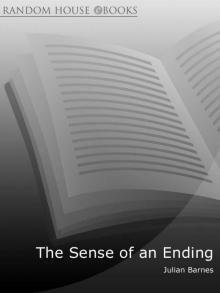 The Sense of an Ending
The Sense of an Ending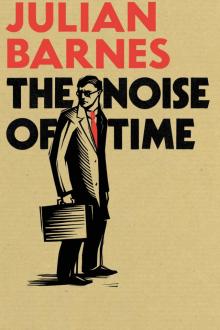 The Noise of Time
The Noise of Time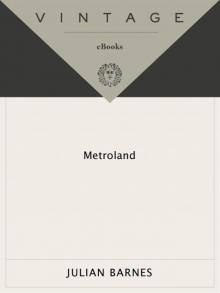 Metroland
Metroland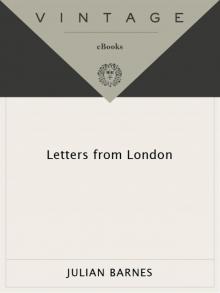 Letters From London
Letters From London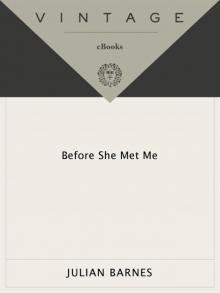 Before She Met Me
Before She Met Me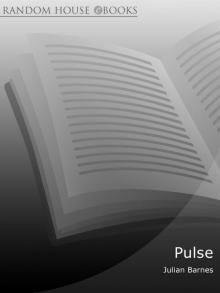 Pulse
Pulse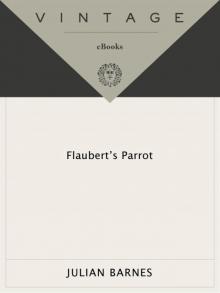 Flaubert's Parrot
Flaubert's Parrot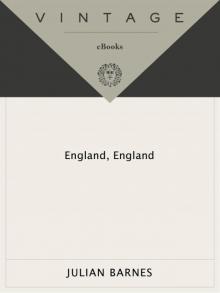 England, England
England, England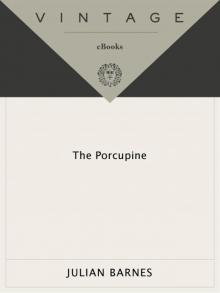 The Porcupine
The Porcupine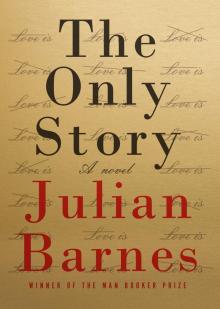 The Only Story
The Only Story Love, Etc
Love, Etc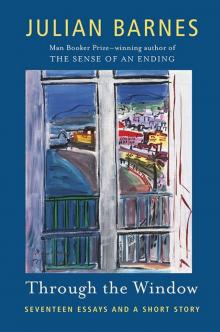 Through the Window: Seventeen Essays and a Short Story
Through the Window: Seventeen Essays and a Short Story Staring at the Sun
Staring at the Sun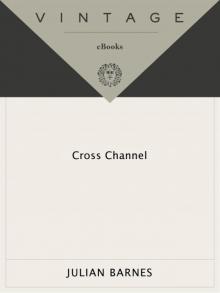 Cross Channel
Cross Channel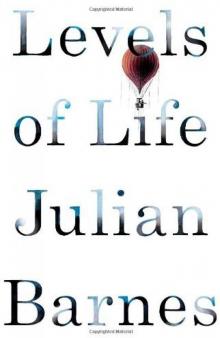 Levels of Life
Levels of Life Arthur & George
Arthur & George Love, Etc.
Love, Etc.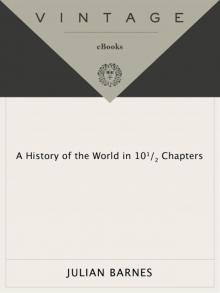 A History of the World in 10 1/2 Chapters
A History of the World in 10 1/2 Chapters Something to Declare
Something to Declare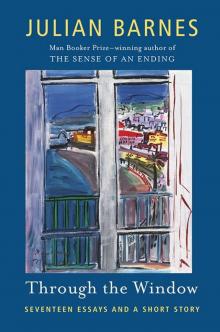 Through the Window: Seventeen Essays and a Short Story (Vintage International)
Through the Window: Seventeen Essays and a Short Story (Vintage International)